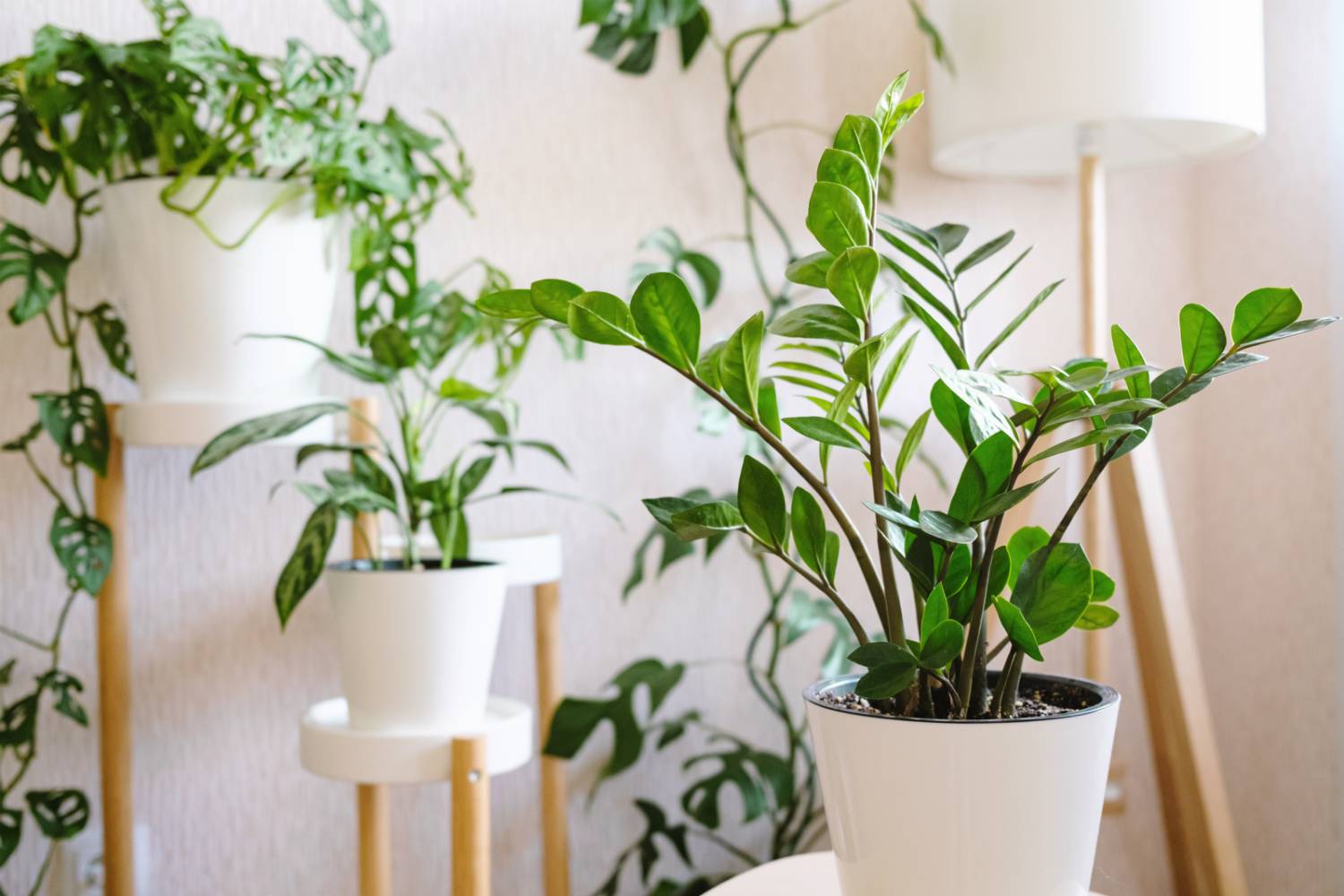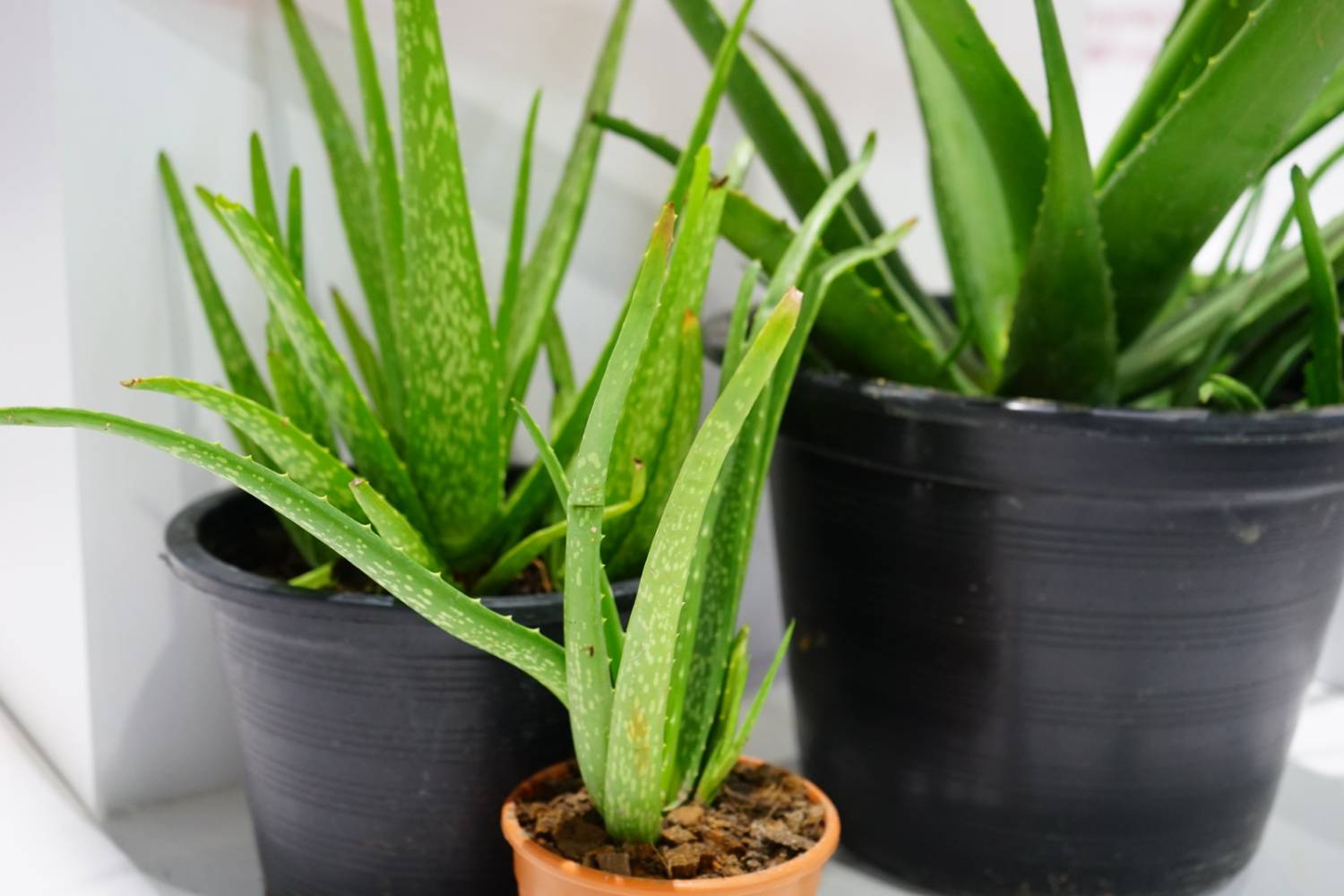These are the best houseplants for beginners! They're easy to grow, and they can survive just about anything—even if you forget to water them.

Looking for a low-maintenance indoor garden plants? Check out these plants that are hard to kill! Even if you're not known for your green thumb, you can still enjoy the beauty and benefits of houseplants with these easy-to-grow varieties. From stylish succulents to cheerful chlorophytums, there's a plant here for everyone. So get ready to add some life to your home décor—these plants are practically impossible to kill!
What are the features of hard-to-kill plants?
Houseplants can be a great addition to any home. You can choose houseplants that are hard to kill. Here are the features that make these houseplants difficult to kill:
- They have thick skin and dense tissues that protect them from damage.
- They have a lot of water reserves so they can survive long periods without water.
- They have a low metabolic rate so they don't need as much food as other plants.
- They have a wide variety of adaptations that allow them to survive in different environments.
- Some houseplants are poisonous if ingested which makes them an attractive option for pest control but also makes them difficult to kill.
Different houseplants that are hard to kill
Many gardeners have a love-hate relationship with plants. Some of us can't get enough of the lush greenery, while others cringe when we have to pull out a weed. But regardless of whether we like to take charge of weed control or prefer to let nature take its course, there are some plants that are notoriously hard to kill.
1) Jade Plant

Jade plants are a popular choice for gardeners and homeowners due to their attractive foliage and flowers. These plants are grown in a variety of environments, making them adaptable to many climates. Jade plants are tolerant of a wide range of soils, including heavy clay soils. It makes them an excellent choice for those with harsh gardening conditions.
This plant is a great choice if you want an easy-to-care-for plant that will not die easily. All you need to do is water it regularly and place it in a spot with plenty of bright light.
2) Rubber Plant

This plant is an easy-to-care-for houseplant that you can grow in a container. It is low maintenance and does not need a lot of water to live.
Rubber plants produce milky latex that can be used to create products like tires, balloons, and other rubber-based items. The latex is extracted from the stem using hot water and pressure.
3) Spider Plant (Chlorophytum comosum)

This plant is an easy-to-care-for houseplant that does not need a lot of water to survive. It loves direct sunlight but can tolerate indirect sunlight as well. Baby spider plants can grow up to three feet tall and need very little water, making them a good plant to keep indoors. To make spider plants grow quickly, place the root ball in water and then shake it up periodically.
4) Peace Lily (Spathiphyllum)

The Peace Lily (Spathiphyllum) is a relatively new addition to the plant kingdom. It is native to South Africa and Zimbabwe, but it has been successfully cultivated in temperate zones around the world. The Peace Lily is an easy-to-grow houseplant that offers bright, colorful appeal.
This plant is an easy-to-care-for houseplant that does not need a lot of care. It has bright green leaves and can tolerate low to moderate light.
5) Golden Pothos

Golden Pothos is a popular houseplant that can be kept in any room of the house. It's easy to grow and requires little water or care. Golden Pothos is a moderate grower and will reach up to six inches in height.
This is a houseplant that does not need a lot of care. It has leaves that are golden-green in color and can tolerate low to moderate light.
6) Snake Plant

This is a houseplant that does not need a lot of care. It has the ability to survive in low light conditions and can tolerate medium-light to moderate light.
This hardy succulent can tolerate low light levels and is usually easy to water. However, if you don't mist it regularly, it can get rootbound and develop brown patches.
7) ZZ plant

This resilient plant is perfect for you if you have a black thumb. It's extremely tolerant to low light conditions, doesn't need frequent watering, and is also a great air purifier! Its leaves are thick and wavy.
8) Japanese Knotweed

The Japanese Knotweed is one of the most invasive plants in the world. The aggressive perennial vine can grow up to a meter or more per day, and its hollow stems make it easy for this plant to creep into almost any area.
9) Brazilian Pepper

The Brazilian pepper, scientifically referred to as the pimenta-do-brasil, is a small tree that can grow up to 25 feet tall and have a diameter of about 3 feet. This tree is also called the "tree-pepper”.It wasintroduced to the U.S. as an ornamental tree for its appealing red fruit that can grow up to 10 inches long and wide.
The Brazilian pepper is a very invasive species that can form dense thickets. The tree has been introduced in Florida, Hawaii, and California as an ornamental tree for its bright fruit.
10) Jessamine Tree

The Jessamine tree is an impressive sight in any garden. They can grow up to 80 feet tall, with broadleaf and needle-leaved arms. They are one of the few trees that are both deciduous and evergreen, meaning they lose their leaves in the fall but retain some leaves through the winter. Their smooth bark has a beautiful tan or light brown color and their soft, fragrant leaves have a deep green shade. The Jessamine tree is versatile and easy to care for, making it a great choice for those new to gardening.
The jessamine tree is a popular ornamental plant that has beautiful yellow flowers in clusters. It's also known as the sambac, and it can grow up to 30 feet tall with a diameter of 12 feet.
11) Trumpet Tree (Campsis radicans)

The trumpet tree is a deciduous tree native to the eastern and southeastern United States. A large, spreading tree, which can grow over 50 feet tall and wide. The trumpet tree is notable for its impressively large flowers, which are bright pink or purple in color and borne in clusters at the end of long branches. These flowers are pollinated by bees and other insects.he fruit is a small capsule filled with black seeds.
The trumpet tree is a deciduous tree that can grow up to 50 feet tall with a diameter of 30 feet. This species is commonly found in Florida, Hawaii, and California where it's also known as the beach palm or Christmas palm.
12) Jacaranda Tree

The jacaranda tree is a deciduous tree that can grow up to 30 feet tall. This species is native to South Africa and has been introduced to Florida and California where it's also known as the flame of the forest.
13) Cast iron plant (Aspidistra elatior)

The cast-iron plant (Aspidistra elatior) is a flowering plant in the family Araceae. It grows up to 2 meter tall with slender stems and large, heart-shaped leaves. The flowers are small, white, and fragrant. The cast-iron plant is native to Southeast Asia but has been widely introduced to other parts of the world as an ornamental shrub or tree.
14) Aloe vera plant

Aloe plants are succulents and easy to grow, but some care is needed. Proper light and good water habits are essential for growing a healthy Aloe vera plant.
There are many uses for the Aloe vera plant. It can be used as a remedy for burns, sunburns, and other skin conditions. It is also used to soothe insect bites and to treat various types of pain. Additionally, aloe vera is often used in natural cosmetics products.
How to care for a houseplant in your home?
Many people enjoy planting flowers in their gardens, but some may not have the time or space to do so. House plants can be a great alternative to add life and color to any room in the home. There are many different types of house/indoor plants, so it is important to choose one that is suited for your climate and needs. Here are some tips on how to care for a house plant:
1) Choose a plant that is suitable for your climate
Some plants require exposure to sunlight while others prefer partial or no sunlight.
2) Water your plant regularly
Water Once a day if the plant is under direct sun light. Water twice a week if the plant is in indirect light or if you're using a water saver pot. Watering can also be increased during warmer months when the plant's roots will go deeper into the potting soil to absorb moisture and keep its soil moist.
3) Trim your plant regularly
This could be done once or twice a year to remove dead leaves and also ensure the plant doesn't become leggy.
4) Give your plant a thorough clean every few months
Dust can accumulate on the leaves and if not removed, it can block the plant from absorbing sunlight and nutrients.
5) Fertilize your plant every few months
A good houseplant fertilizer will have balanced levels of nitrogen (N), phosphorus (P) and potassium (K). Follow the dosage instructions from the package.
6) Repot your plant when needed
Most plants will need to be repotted every 1-2 years into a pot that is one size larger. Use good quality potting soil and make sure to water the plant well after transplanting.
